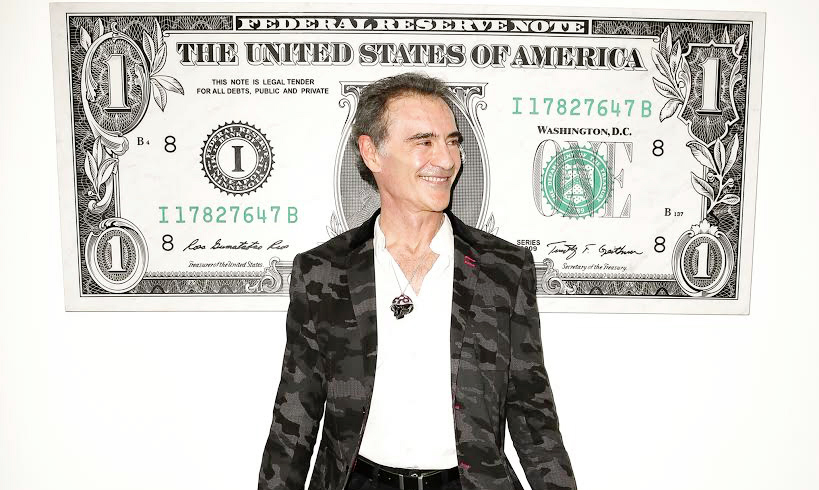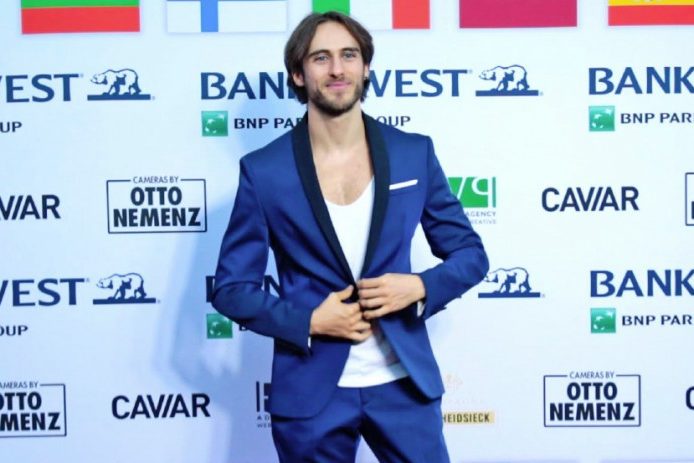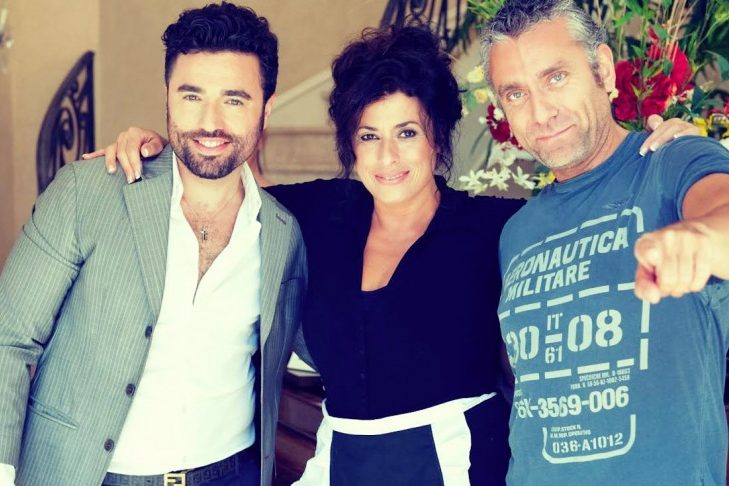The De Re Gallery debuted Mauro Perucchetti’s Pop Fiction exhibition on Thursday, September 10th in West Hollywood. Mauro and his stunning wife Lorena Perucchetti, who is also his PR manager, both arrived elegantly dressed and accessorized with miniature pieces of Mauro’s artwork in the form of necklaces. With Peroni Nastro Azzuro as sponsor, the night was filled with special guests including esteemed art critic Peter Frank, actresses Marie Cleopa, Jessie McLauchlan, Melia Kreiling, actors Blake Cooper Griffen, Carson Kelley and many more. Filling the ambiance with energetic music, DJ Kate set the mood for a classy and enjoyable night. Mauro and the gallery owner Steph Sebbag courteously welcomed everyone and posed for entertaining pictures.
Mauro’s work Pop Fiction explores issues of consumerism and society’s addiction to it. Each artwork embodies Mauro’s fascination as well as our own, as the audience, in regards to human rights, gender, politics, and pressing societal issues involving America. After this exhibition, Mauro has been invited for a solo show in Doha Qatar by Anima Gallery.
How would you describe your Pop Fiction exhibition?
The title of the show relates to the fact that most art, just like society, carries a bit of fiction. Things are never quite as straightforward as we might like them to be. This show has some Americana undertones and, just like a jazzy Hollywood movie, it can easily be embraced by anyone. It also just seemed like the perfect title for a show in Hollywood.
Is there a particular message you’d like to convey to your audience?
With my work, I always prefer to make observations rather than shoving a concept down anyone’s throat. I have always had a passion for aesthetics and prefer an artwork to first draw the viewer in with its beauty. Hopefully the time one spends absorbing the less obvious content, it then becomes a less strenuous experience overall. Each artwork has a story rather than the sum of a grouped “Message.”
How would you describe your interaction or your artwork’s interaction with an L.A. audience in particular?
It normally takes time for an audience to get to know your work, but the fact that we have a public installation just around the corner has created a great momentum. Some time ago, before we even knew about the exhibition, my wife and PR director Lorena contacted the City of West Hollywood, which embraced the work immediately and came up with the current project. The response we have had from it has been wonderful.
Why did you choose to use resin as a medium?
We all are as different as our fingerprints. Each individual performs the same tasks in different ways, creating their own unique style. Resin is the medium I mostly use, you could say it’s my signature style at the moment. I started to use resin many years ago but in 1999 I really began to embrace it. It was the perfect medium for the Jelly Babies, which I made for my body of work on cloning. I love its translucent and light reflective qualities. The effects are both happy and moody at the same time. I also love it because it’s relatively new and unexploited; therefore, not as easy to find when it comes to artistic mediums. Unfortunately, it is also technically very challenging and can be punishing, but I like that. It is actually funny when most people think the artworks just pop out of a mold and appear instantly as you see them in the gallery display. It’s a more complicated process that took me years to develop. When I first started, I looked for help around the world only to be told that what I was trying to achieve was impossible. So I had to do it alone.
Having been born in Milano, Italy, how has your Italian heritage influenced your career?
I don’t really think that having been born in Milano alone has influenced my career as much as the sum of all the experiences and the places I have lived in, like Milano, Rome, London, New York, and Los Angeles. If I had to fish one ingredient out of that cocktail to answer your question, I would say that Italy has infiltrated my soul with a passion for the aesthetics and with a virus called perfectionism. Having said that, artworks like Modern Heroes and Michelangelo 2020, currently part of a public installation by the City of West Hollywood, are important to me as they most definitely represent a return to my roots. I spent some formative years in Rome in my youth and remember being in awe by the amazing art disseminated throughout the city. I still feel that admiration and eventually have found the opportunity to combine that classic Italian concept with contemporary issues to form my own style.
You became an artist later in life, what triggered your interest to start making art midlife?
At an early age, I was probably spending more time drawing, painting and making things with my hands rather than studying. My father often reminded me of an artwork I made in resin at the age of 17. For my parent’s sake, when I tried to decide what I was going to do in life, I was overwhelmed by all the possibilities. This was, in my opinion, the first unfortunate sign of a creative mind. For the next 30 years or so, I lived as freely as possible but still making a living. At the age of 50, I woke up one morning and decided that no amount of money or worldly comforts could keep me from being creative. So I sold my business and my house to finance my move into art.































